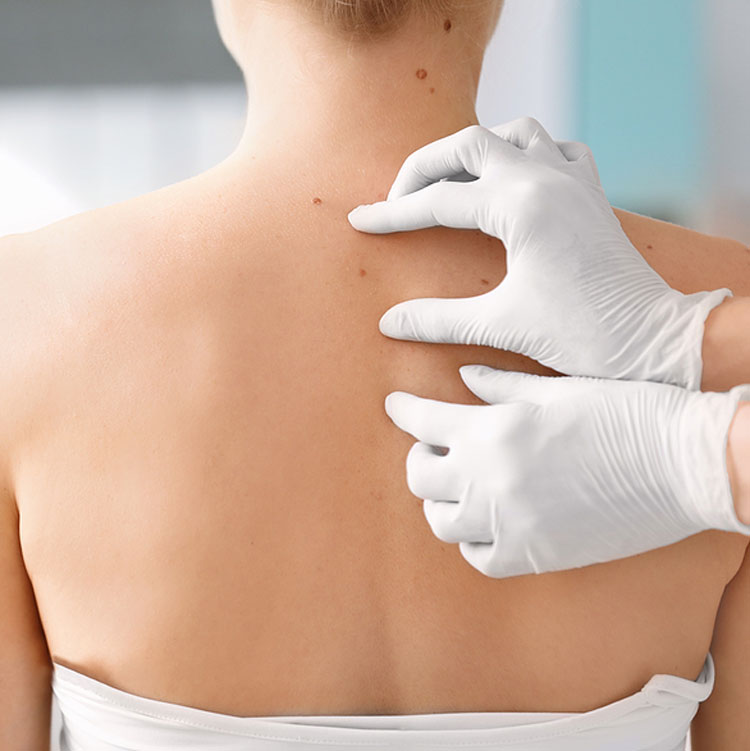
Most of us have a few moles somewhere on our skin — those small, pigmented spots that are often round or oval and vary in color from pink to brown or black. While the vast majority of moles are harmless, it’s important to know when a mole may be signaling something more serious.
So, how can you tell if a mole is just a beauty mark — or a potential cause for concern?
What Are Moles, Exactly?
Moles, medically known as nevi, are clusters of pigment-producing cells called melanocytes. They often appear during childhood or adolescence, and their number and appearance can change with age, sun exposure, and hormonal changes.
Moles are common. Almost every adult has a few of them, and adults who have light skin often have more with 10 – 40 moles on their skin and many are completely benign. But not all moles are created equally; in some cases, moles can evolve into a skin cancer called melanoma.
When Are Moles Harmless?
Moles that have these characteristics are typically considered benign, may never change significantly, and are nothing to worry about:
- Uniform in color
- Smaller than a pencil eraser (about 6mm)
- Symmetrical in shape
- Stable in appearance over time
When to Be Concerned: The ABCDEs of Melanoma
As a dermatologist, I use the ABCDE method to help identify warning signs of melanoma, the most dangerous form of skin cancer:
- A – Asymmetry: One half of the mole doesn’t match the other.
- B – Border: The edges are irregular, ragged, or blurred.
- C – Color: There’s a mix of colors, dark color, or an uneven tone.
- D – Diameter: The mole is larger than 6mm (though melanomas can be smaller).
- E – Evolving: The mole changes in size, shape, color, or begins to bleed or itch.
If you notice any of these signs, it’s time to schedule a skin check.
Most moles are harmless and nothing to fear. But staying informed and keeping an eye on changes can make all the difference when it comes to early detection and peace of mind. When in doubt, please feel free to contact us to make an appointment for your skin check.
Other Red Flags
Beyond the ABCDEs, you should also be cautious if you notice:
- A new mole that appears after age 30
- A mole that looks dramatically different from your other moles (called the “ugly duckling”)
- A mole that becomes painful, itchy, or begins to bleed or crust
Don’t Panic But Also Don’t Ignore Moles
Instead, please know that there are important ways to help you find melanoma early and get treatment:
- A change to a mole or a new mole should be evaluated.
- You can find melanoma early by checking your own skin.
- If you see a mole or other spot that’s growing, itching, bleeding, or changing in any way, immediately make an appointment to see us.
When caught early, melanoma is highly treatable
Protecting Your Skin
While some risk factors for skin cancer — such as family history — are out of your control, others are manageable. Here’s how you can reduce your risk:
- Use sunscreen daily, even on cloudy days.
- Avoid tanning beds.
- Wear protective clothing and seek shade when outdoors.
- Perform monthly skin self-exams and see us for your annual exam.
Most moles are harmless and nothing to fear. But staying informed and keeping an eye on changes can make all the difference when it comes to early detection and peace of mind. When in doubt, please feel free to contact us to make an appointment for your skin check.
